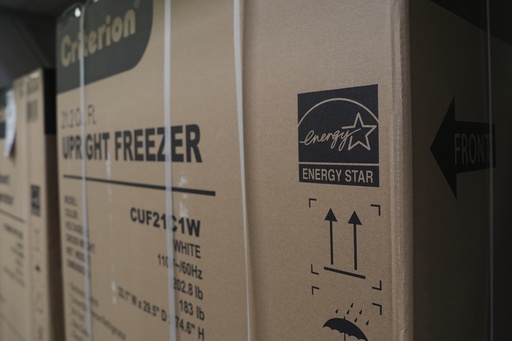
WASHINGTON — Former President Donald Trump has once again voiced his frustrations with household appliances, particularly regarding water flow from showerheads. Back in the White House, he is advocating for the relaxation of efficiency standards, which is expected to lead to increased water and electric bills for consumers.
On his first day in office, Trump signed an executive order aimed at “unleashing American energy,” which includes plans to modify standards for various household items such as dishwashers, showerheads, refrigerators, laundry machines, toilets, among others. These efficiency standards were developed to minimize energy and water usage, promoting higher-efficiency appliances that, while potentially more expensive initially, offer savings in the long run.
In his executive order, Trump assured that consumers wouldn’t be compelled to purchase specific products. He expressed a desire to preserve Americans’ freedom to choose from a broader range of appliances, particularly highlighting products like lightbulbs, dishwashers, washing machines, gas stoves, water heaters, toilets, and showerheads. His personal affinity for showerheads has been well-documented, as he has previously remarked on their water flow, claiming that inadequate water flow affects his hair and overall showering experience.
For more than thirty years, federal energy regulations have capped the maximum water flow for showerheads at 2.5 gallons per minute (9.5 liters). The Obama administration refined these rules to limit this water flow collectively across all nozzles of a showerhead, while Trump’s prior administration amended the interpretation to allow each individual nozzle to discharge up to 2.5 gallons per minute. The current Biden administration has restored the tighter restrictions established during Obama’s presidency.
Other devices that may see changes under Trump’s proposals include dishwashers and washing machines, which benefited from efficiency upgrades in previous government policies. Experts assert that these standards are crucial for conserving water and reducing energy costs for consumers.
Trump’s arguments for reforming these long-standing standards focus on perceived inconveniences and consumer choices. Analysts contend that many in the industry view energy efficiency as a burden, overlooking the long-term savings and environmental benefits that come with it. There exists a legal stipulation in the appliance standards law that prevents any weakening of the current efficiency standards, compelling any potential changes to comply with existing regulations.
Previous attempts during Trump’s first term tried to exploit loopholes that allowed the introduction of less efficient products. Yet, according to experts, manufacturers did not take advantage of these paths. The prioritization of toilets and showerheads by the former president is noted as particularly unusual.
The implications of altering these standards extend beyond consumer energy bills. Experts assert that conserving energy is a vital part of combating climate change and keeping costs manageable. The director of the Climate Action Campaign emphasized that conservation represents an easy, cost-effective method to achieve emissions reduction goals.
On the international front, while renewable energy often garners the most attention during climate discussions, enhancing energy efficiency remains a financially viable strategy for tackling greenhouse gas emissions. Although agreements like the Dubai climate accord aim to double energy efficiency improvements by 2030, there is a tendency for such initiatives to fade into the background.
For everyday consumers, there are no mandates dictating specific appliance purchases. Research, however, indicates high satisfaction levels with energy-efficient products among the public. A 2022 poll revealed that around three-quarters of adults had utilized energy-efficient appliances primarily to save money, reflecting a trend towards valuing efficiency.
Consumer product review platforms suggest that a balance exists between effectiveness and efficiency in modern appliances. Experts argue that there is a wide selection of options, with many high-performing models also being energy-efficient. They believe that stepping backward to less efficient appliances would ultimately increase consumer energy expenditures and compromise the advantages gained from having modern appliances.
This ongoing debate underscores the tension between consumer choice and environmental considerations as policymakers navigate the complexities of energy standards in an evolving landscape.

